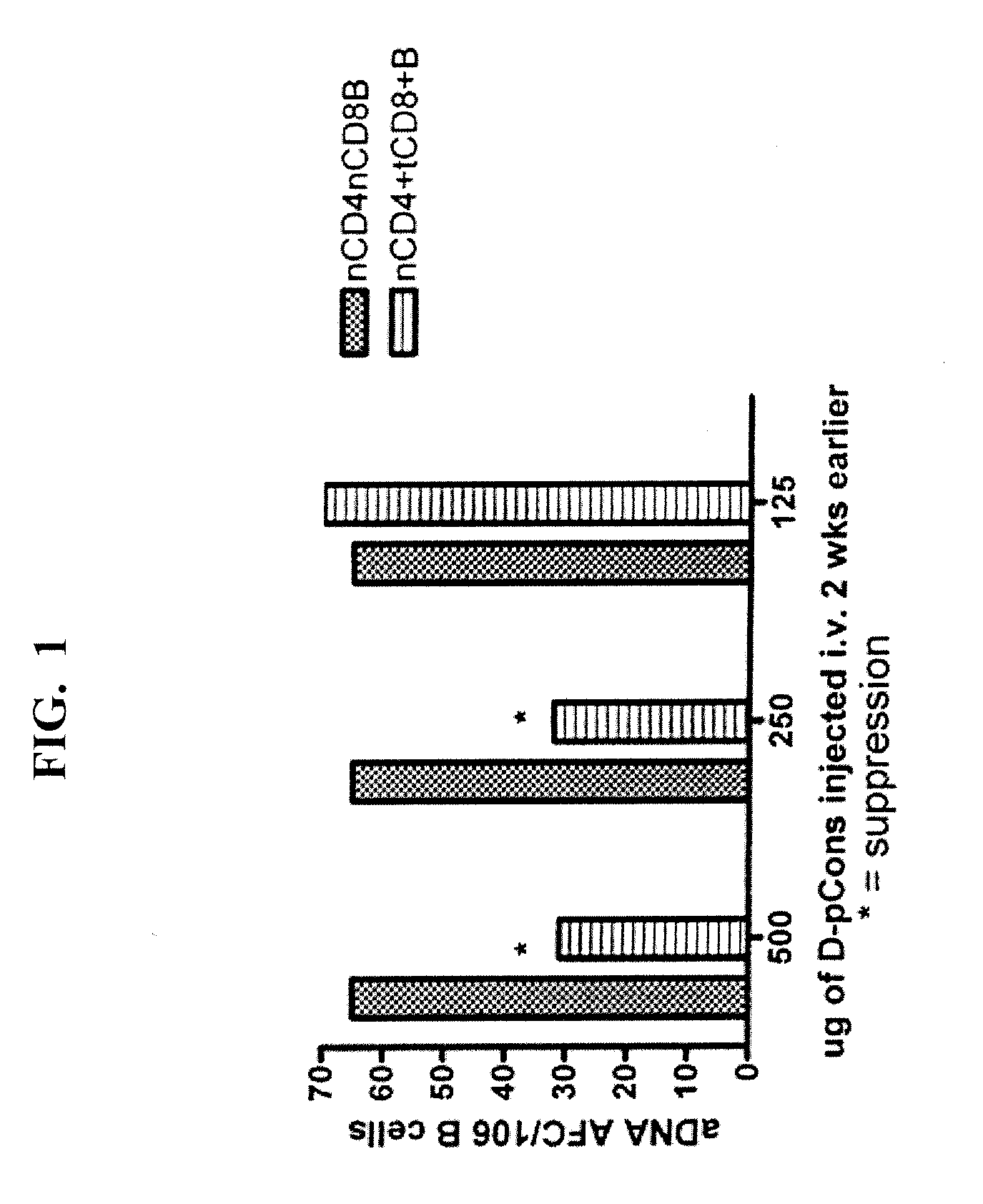Peptide for induction of immune tolerance as treatment for systemic lupus erythematosus
a technology of immune tolerance and peptide, which is applied in the field ofdamino acid peptides, can solve the problems of insufficient information on the etiology of the disease, no specific treatment aimed at preventing or treating sle, and death in sle patients, etc., and achieves the effects of inhibiting/suppressing the production of autoantibodies in a mammal, inhibiting acidic or enzymatic degradation of peptides
- Summary
- Abstract
- Description
- Claims
- Application Information
AI Technical Summary
Benefits of technology
Problems solved by technology
Method used
Image
Examples
example 1
Illustrative Methods and Materials Associated with Embodiments of the Invention
Mice
[0059]NZB (H-2d / d), NZW (H-2z / z), Balb / c and (NZB×NZW) F1 (H-2d / z) mice were bred and maintained at the University of California Los Angeles (UCLA) or purchased from The Jackson Laboratories (Bar Harbor, Me.). All mice were housed in pathogen free conditions and were treated in accordance with the guidelines of the University of California Los Angeles Animal Research Committee, an Institution accredited by the Association for Assessment and Accreditation of Laboratory Animal Care (AAALAC). All experiments were conducted in female mice.
Peptides
[0060]The peptides used in this study and the MHC molecules they bind are described in detail (see, e.g. Singh et al., J Immunol 2007; 178:7649-57). The tolerizing D-amino acid peptide pCons (FIEWNKLRFRQGLEW (SEQ ID NO: 1)) is artificial; it contains T cell determinants based on the J558 VH regions of several murine mAb anti-dsDNA from BWF1 mice. The negative con...
example 2
Suppression of Systemic Lupus Erythematosus In Vivo by Induction of Regulatory / Suppressor T Lymphocytes Following Oral or Subcutaneous Administration of an Autoantibody-Based IGG 15-Mer Peptide D Form of Pconsensus (D-Pcons)
[0085]Autoantibodies contain amino acid sequences in variable regions that are T cell epitopes and can stimulate a) helper T cells to expand autoantibody production by autologous B cells, or b) regulatory / suppressive T cells that suppress both autologous helper T and B cells. We identify several such T cell epitopes in the VH regions of several monoclonal antibodies to DNA made from NZB / NZW F1 female mice (BWF1)—a model of SLE—and from anti-DNA of several patients with SLE (see, e.g. Ebling et al., Arthritis Rheum. 1993; 36(3):355-64; and Kalsi J et al., Lupus 2004; 13:490-500). Anti-dsDNA are important in induction of nephritis in mice and some patients, and are specific markers for SLE clinically.
[0086]We administered i.v. high doses of selected stimulatory 12-...
PUM
| Property | Measurement | Unit |
|---|---|---|
| pH | aaaaa | aaaaa |
| acid | aaaaa | aaaaa |
| disorder | aaaaa | aaaaa |
Abstract
Description
Claims
Application Information
 Login to View More
Login to View More - R&D
- Intellectual Property
- Life Sciences
- Materials
- Tech Scout
- Unparalleled Data Quality
- Higher Quality Content
- 60% Fewer Hallucinations
Browse by: Latest US Patents, China's latest patents, Technical Efficacy Thesaurus, Application Domain, Technology Topic, Popular Technical Reports.
© 2025 PatSnap. All rights reserved.Legal|Privacy policy|Modern Slavery Act Transparency Statement|Sitemap|About US| Contact US: help@patsnap.com



